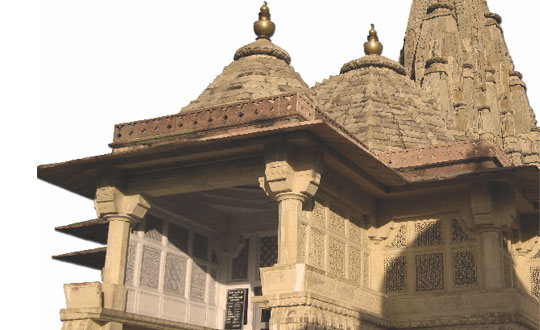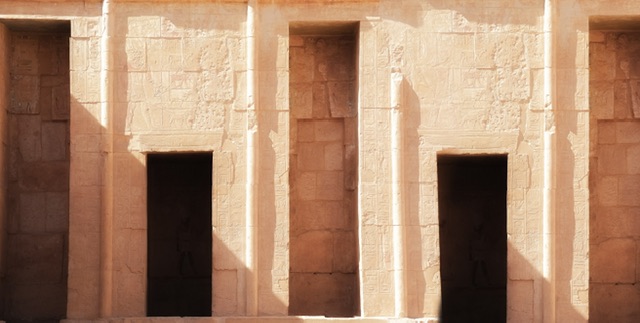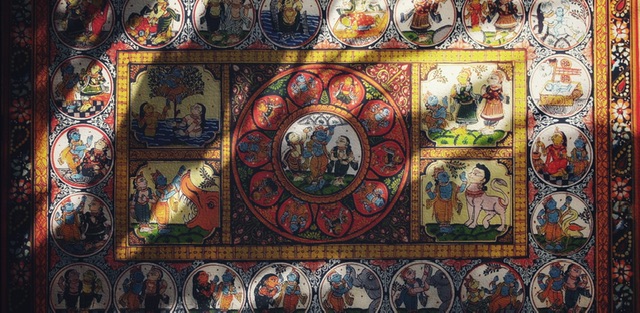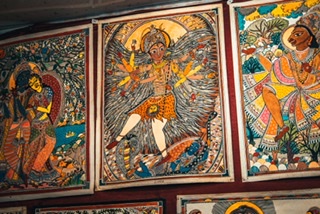In this issue of The Inner World, we will take you to the Kalki temple situated in Jaipur, Rajasthan. Kalki, literally translates as ‘born out of time’. The story of Kalki is the story of the Indian conception of time. And time, according to Vedic scriptures, unfolds in forever repeating cyclic patterns of four great ages or yugs – the cycle lasting for four million, three hundred and twenty thousand years.
The first 1,440,000 years make up the Satyug, which is the age of truth and virtue, symbolised by the cow standing on four legs of dharma. This is followed by 1,080,000 years of Tretayug, the age in which the cow has three legs of dharma and one leg of adharma. Next, is the Dwaparyug which lasts 720,000 years and is the age when yet another leg of dharma is replaced by the leg of adharma. And finally, there is the Kalyug or the age of complete corruption where only one leg of dharma remains. This also happens to be the shortest yug lasting 360,000 years.
We are now approaching the final phase of kalyug when adharma is at its peak. The Puranas describe this as the time when there is degeneration of human values, men are wicked, quarrelsome and beggar-like, times when people are oppressed by kings and by the ravages of war, calamity, disease, fatigue and anger…which is exactly what is happening right now. The Puranas further say that at the end of kalyug, Lord Vishnu will reincarnate as Kalki to restore dharma and herald the golden age of satyug. The Kalki temple in Jaipur narrates the story of the tenth avatar of Lord Vishnu, Kalki.
Built around 1727 AD by Raja Sawai Jai Singh, the temple faces the eastern entrance to the city palace, which opens into the Sireh Deori Bazaar, famous for its Hawa Mahal, the palace of winds. Its prime location speaks of the importance of the temple but strangely, instead of opening directly, the temple was set behind the street facades of impressive buildings. Only the temple top is seen rising into the sky from the streetscape. Although, the access to the temple is through a ceremonial archway that opens at the street level, the temple itself sits atop a twenty foot high plinth. It is interesting to note, that instead of steps leading up to the temple, there is a ramp in two easy gradients. Once again, within the temple complex, we find a ramp along with steps that lead to the temple. Facing the temple in one corner is a canopied kiosk which contains a fine white marble statue of a horse, resonating with the puranic description of Kalki atop a white horse with a drawn blazing sword.
Constructed in stone, the Kalki temple conforms to the typical style of the North Indian Temple Architecture. However, there is one architectural feature in the Kalki temple that is unique. It is the presence of two shikhars or temple tops instead of the usual one. According to the resident pujari (or priest), the smaller shikhar at the back is called Laxmi Niwas or the abode of Goddess Laxmi – the consort of Vishnu. It was built to house the idol of Padmawati Devi underneath the smaller shikhar but the statue is kept along with that of Kalki, under the taller or the main shikhar.
The temple itself is closed. In fact it has been closed ever since it was built. Today, a caretaker priest appointed by the state government keeps it clean and tidy by periodically opening it. Otherwise, it has a deserted look. No devotees. No prayers. No temple bells.
The avatar is yet to manifest and for it to manifest the energy needs to be invoked…Dhyan Foundation is doing Vedic havans continuously to invoke Vishnu…as the manifestation will only happen after repeated invocations. We invite people to join in these invocations for deliverance.
To be part of a Vedic havan at Dhyan Ashram or to have a havan conducted at your home…+91 9910029416
शम्भल ग्राम मुख्यस्य ब्राह्मणस्य महात्मनः।
भवने विष्णुयशसः कल्किः प्रादुर्भविष्यति।।
Srimad Bhagavata Maha Purana – 12:2:18
(In the village of Sambhal, Uttar Pradesh, there will be a Bramhin ruler called Vishnuyasha in whose house Kalki will be born…)
References:
http://www.newbiharmandir.org/
http://www.stephen-knapp.com/kalki_the_next_avatar_of_God.htm
http://www.iskcondesiretree.net/profiles/blogs/the-advent-of-lord-kalki






I like the details & write up on Kalki temple. Great write up.
However, I would like to correct the information given here. The temple is not closed. Daily ritual of AArti/ Puja is performed everyday. As for no devotees, well there are many such temples which were built by Jaipur royalty but even they don’t have many devotees. In fact, resident of city are unaware about existence of these temples.